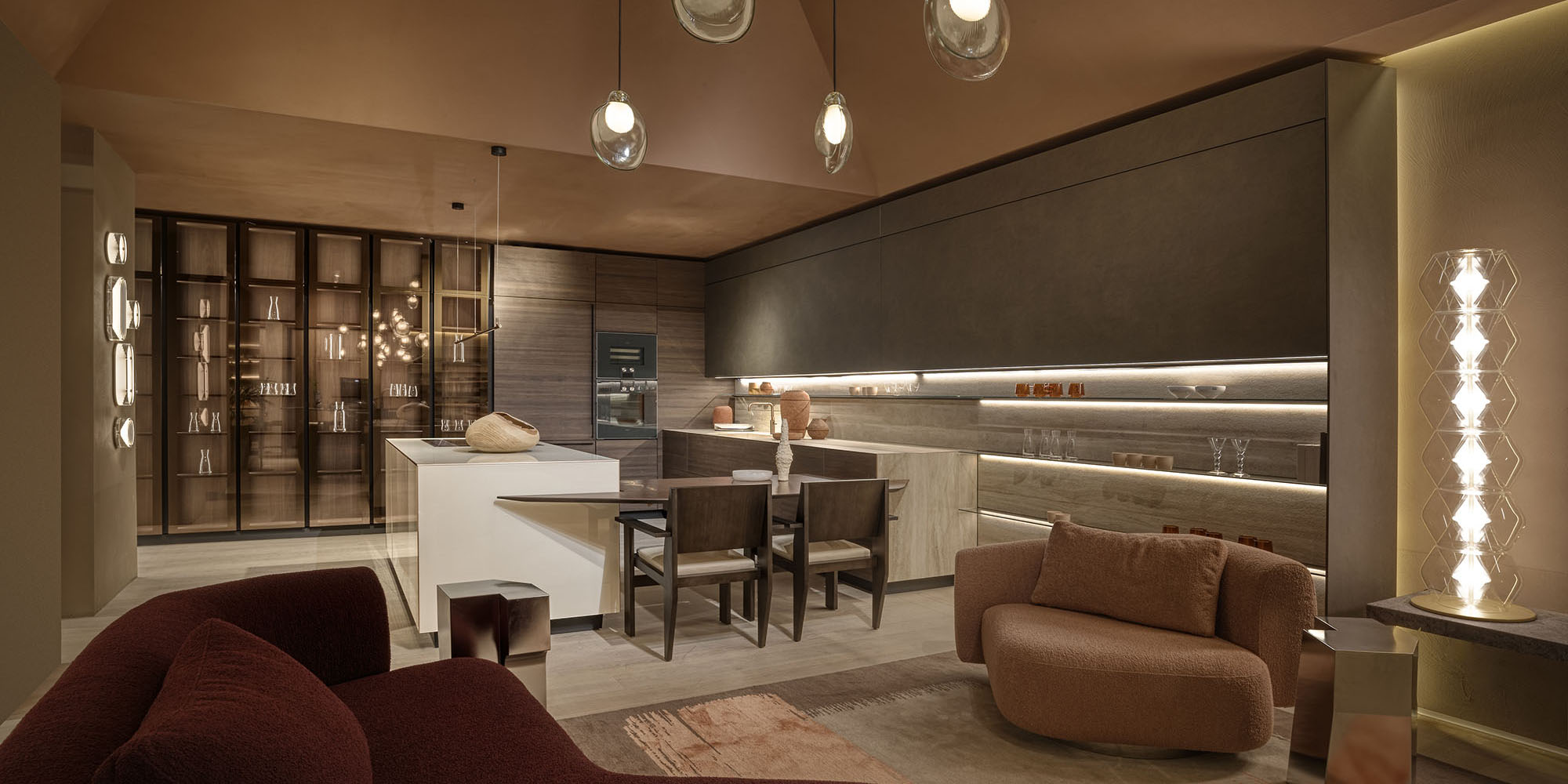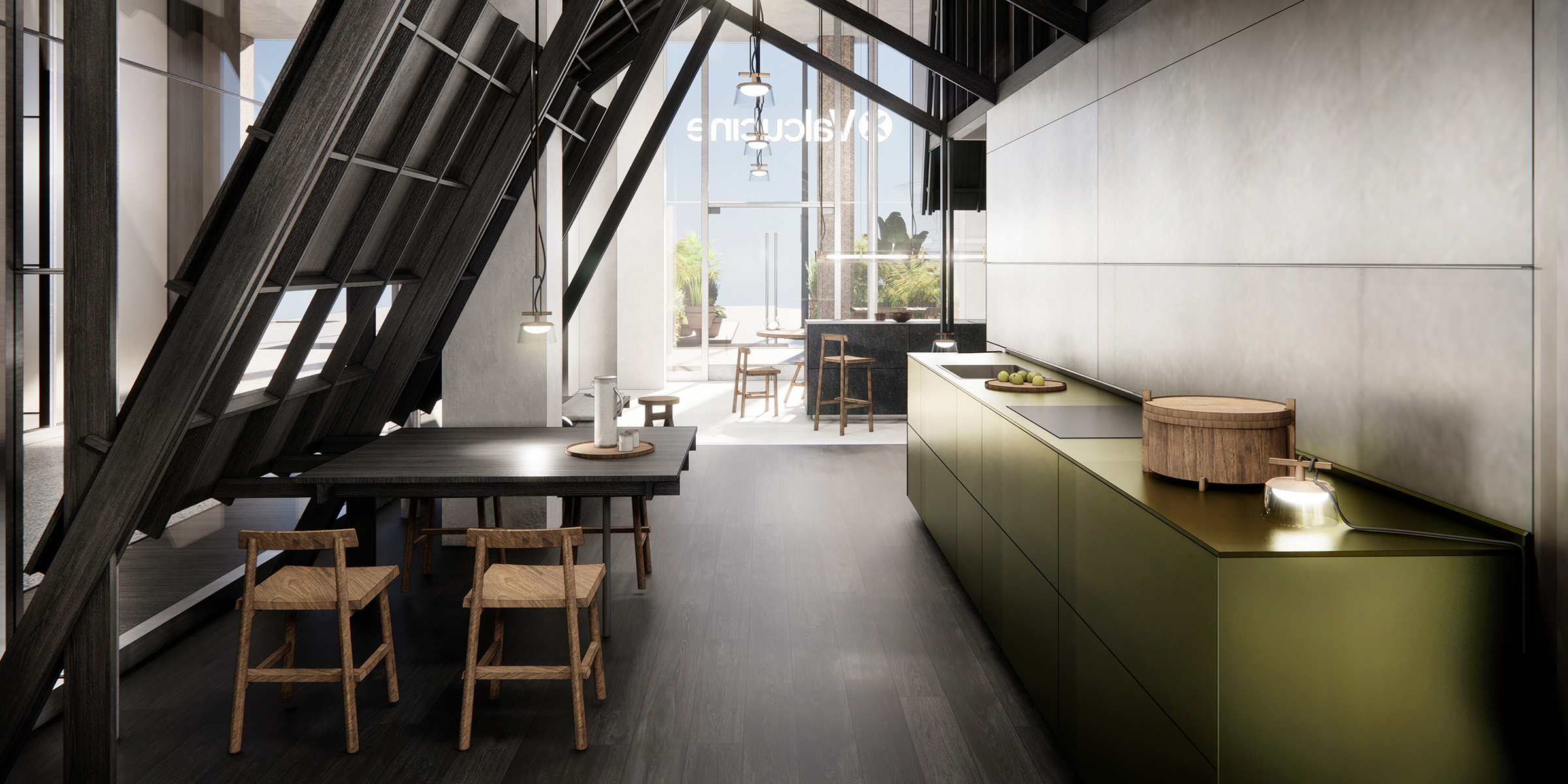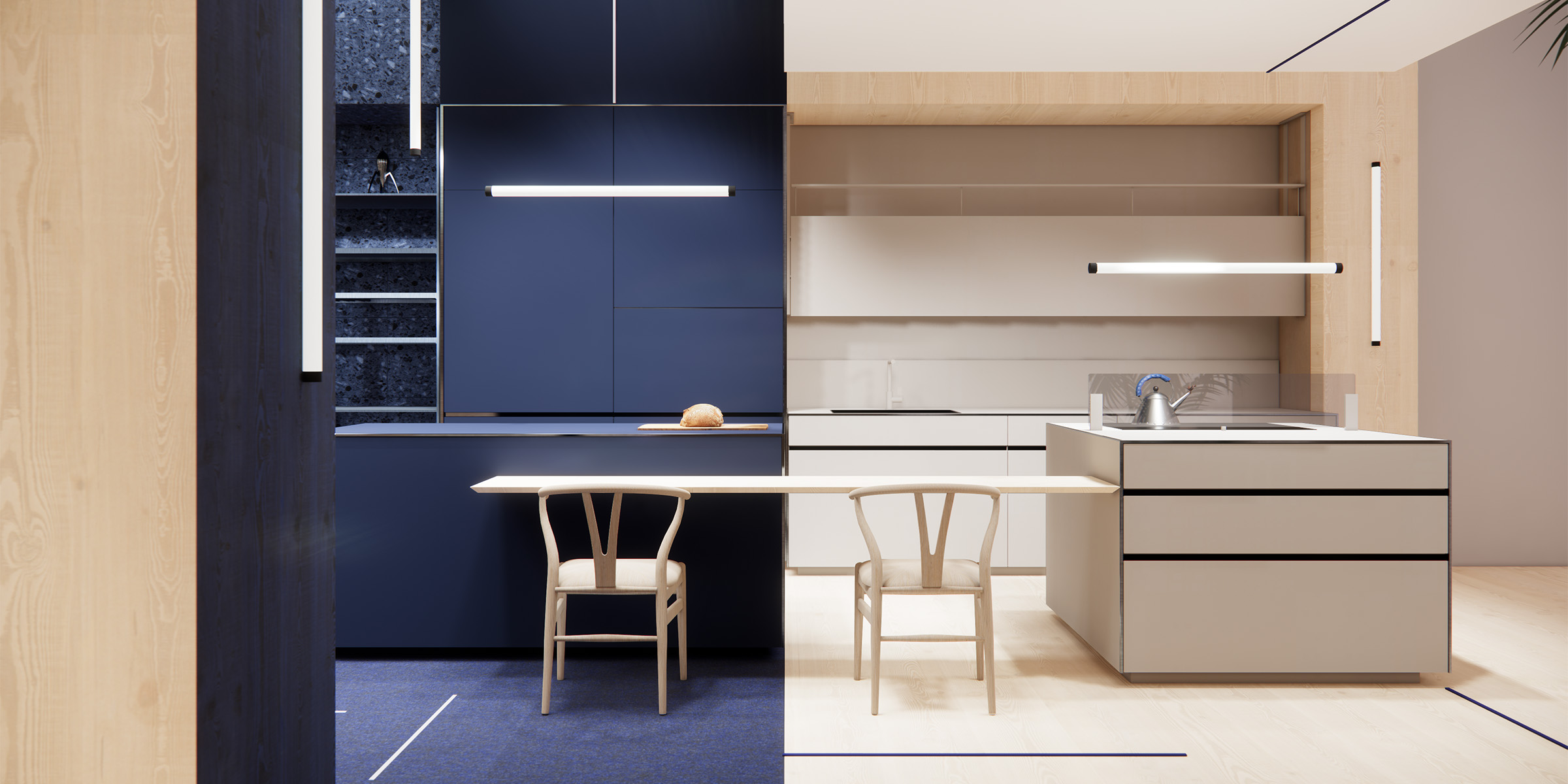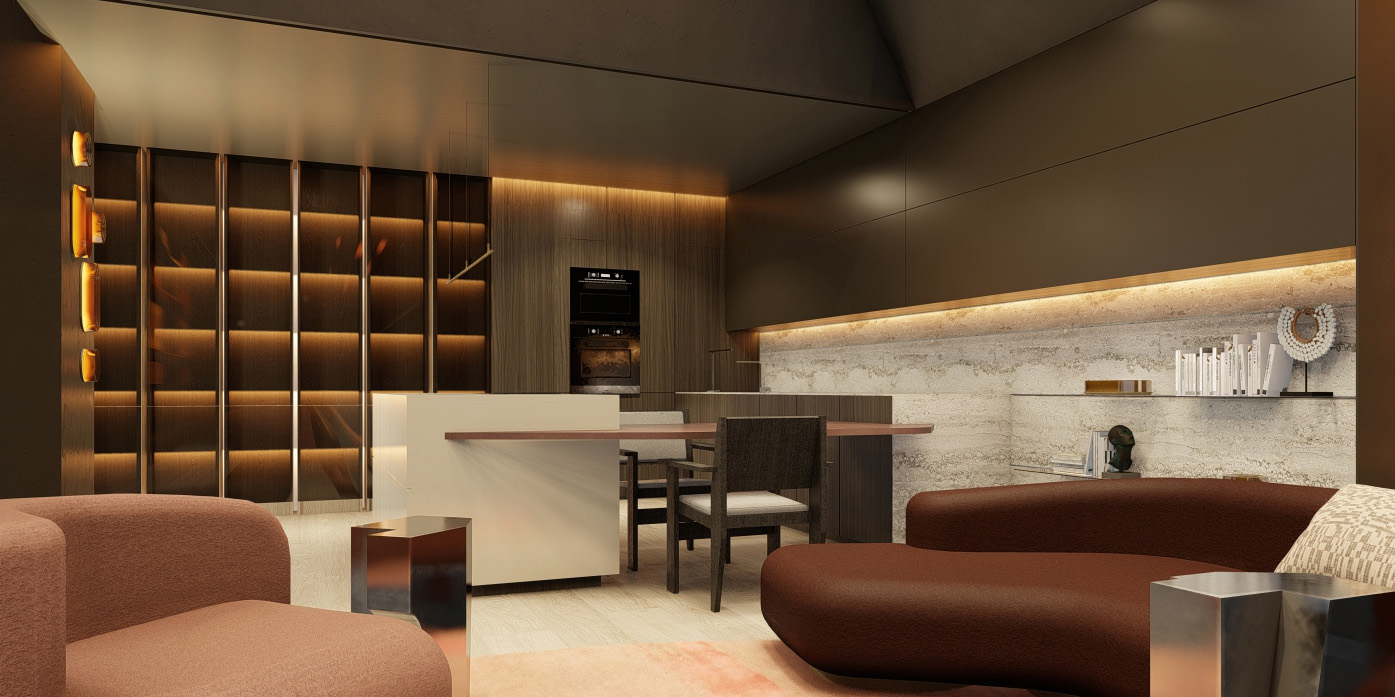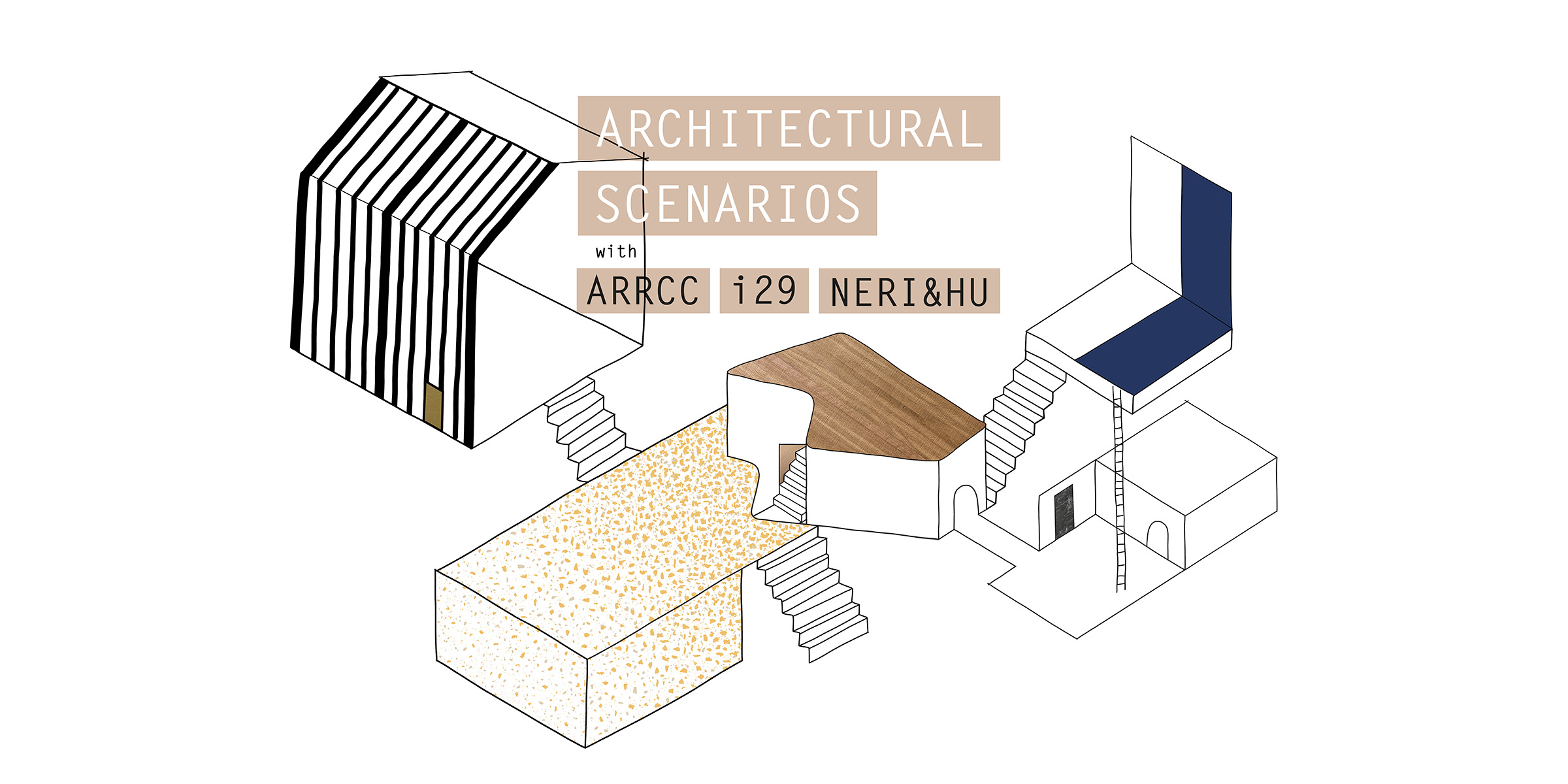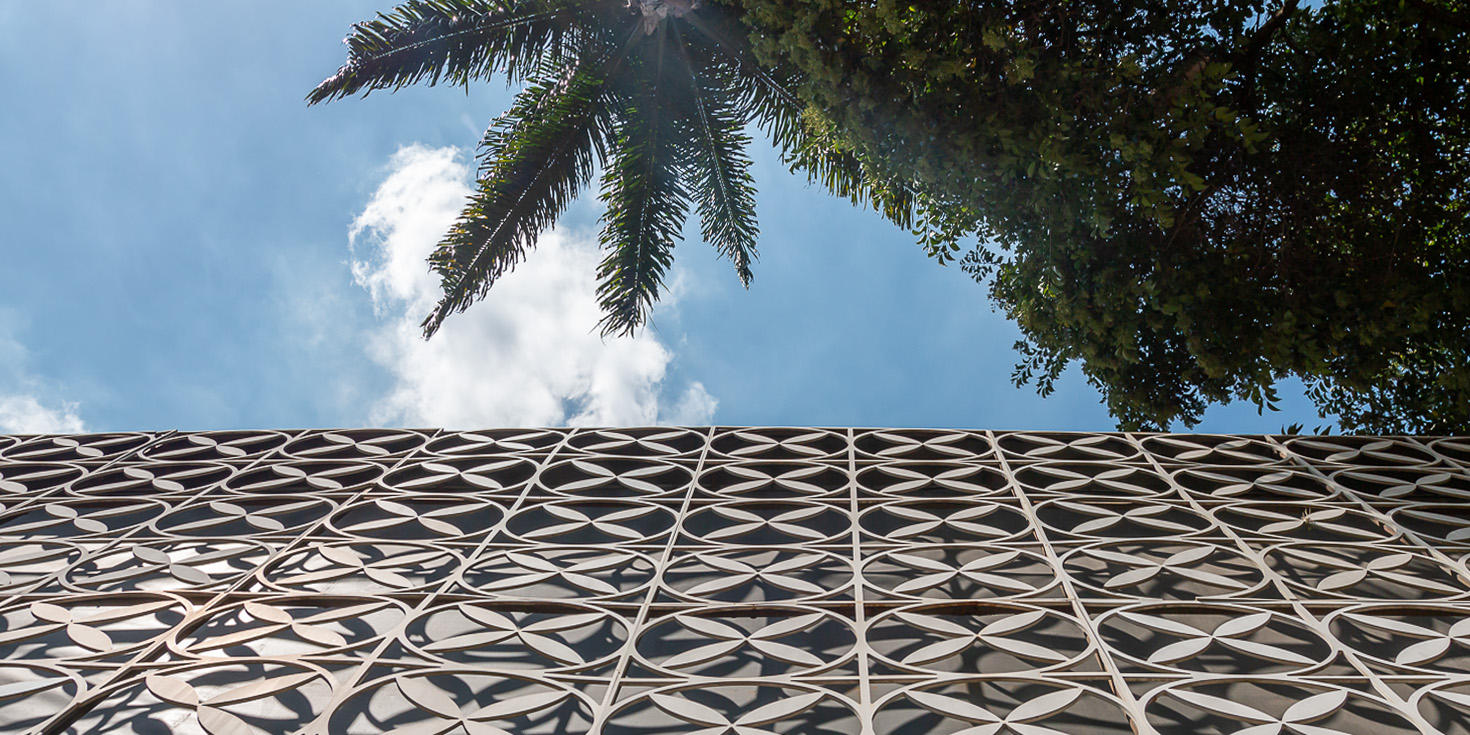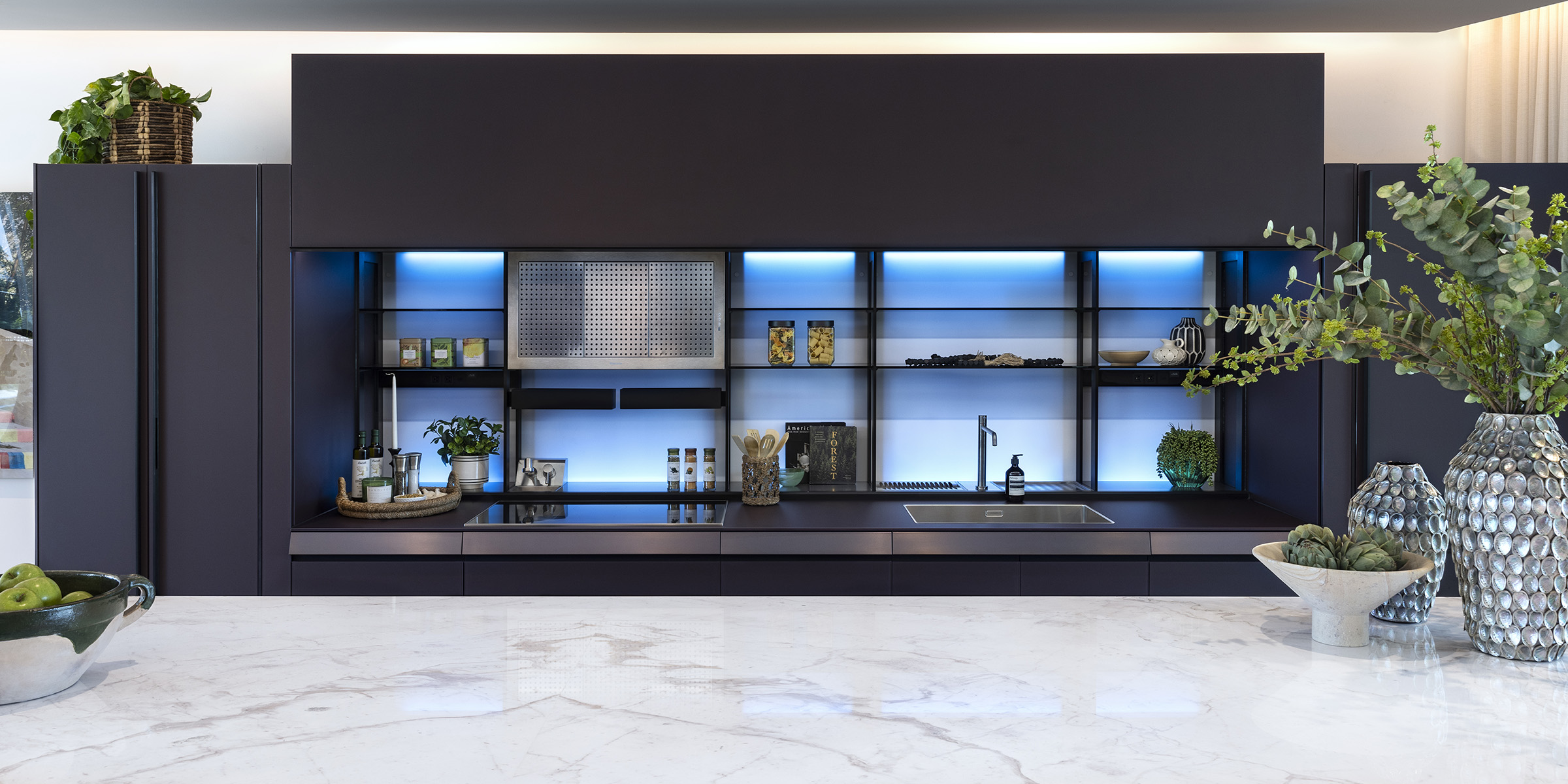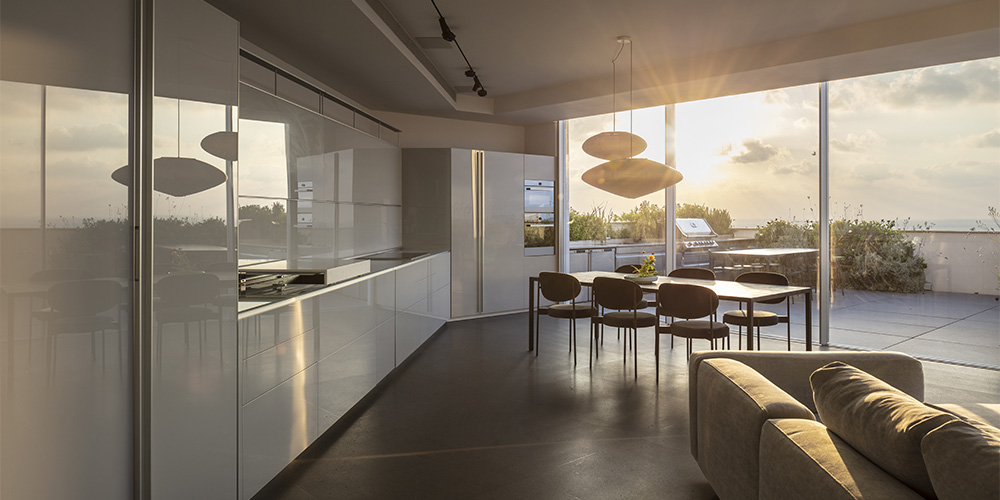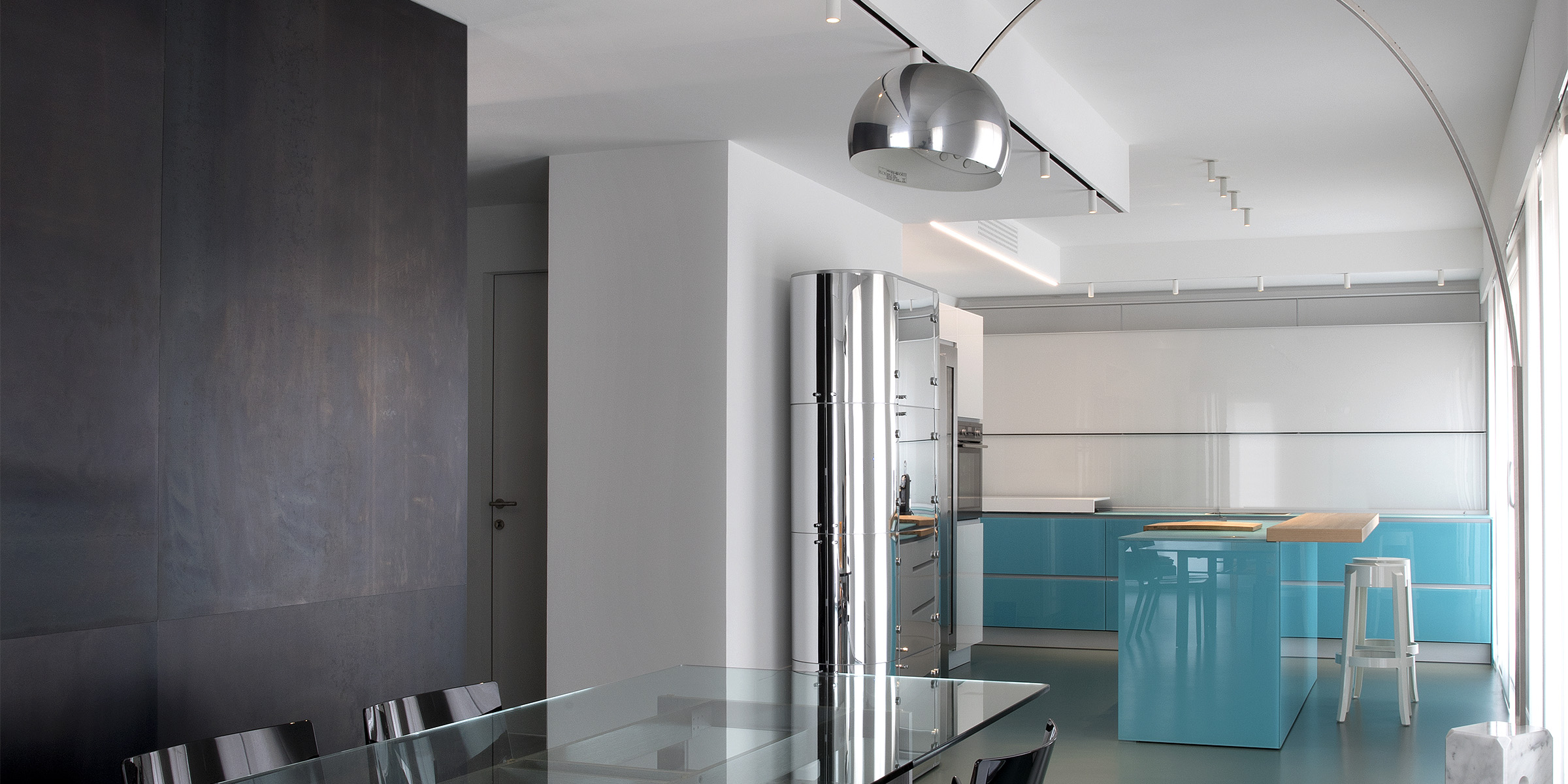Ugo Nespolo's world through traditional and modern art
Valcucine's collaboration with the Italian artist Ugo Nespolo, whose career dates back to the Sixties to the era of Italian Pop Art to Conceptualists and Future Poverists, is espressed by some artistic collections of kitchen programmes, such a Artematica.
On the 27th November, The New York Times published an article about Ugo Nespolo, descibing his works through traditional and modern art. Here below is a part of the original article:
The paintings, sculptures and other playful objects raised in the fantastic nursery of Mr. Nespolo's imagination bring to mind that whole new race of Futurist toys proposed in the “Futurist Reconstruction of the Universe” which, it was envisaged, would not only delight children but also be “very useful to adults, too, keeping them young, agile, joyful, self-assured, ready for anything, indefatigable, instinctive and intuitive.”
The authors of this manifesto, published in 1915, were Giacomo Balla and Fortunato Depero, whose works Mr. Nespolo has collected for many years. He is also the owner of around 4,000 manuscripts relating to Depero's life and works, and the exotic waistcoat, designed by Depero, which Filippo Tomasso Marinetti, the founder of Futurism, can be seen sporting in a famous photograph taken in Turin in 1922.
The Futurists hated museums, or at least affected to — Marinetti likened them to cemeteries in the first 1909 Futurist Manifesto — but Mr. Nespolo is an avid enthusiast for them. One favorite, he says, is the Bargello in Florence, which contains some of Italy's greatest sculptures — from Donatello's “David” and “St. George” to Michelangelo's “Bacchus” and Giambologna's “Mercury” — alongside an outstanding collection of ceramics, glass, metalwork, ivories, enamels and other applied arts.
Mr. Nespolo was invited by the Bargello to stage a retrospective of his work in its temporary exhibition space, the first time it has ever hosted a contemporary artist. Mr. Nespolo's “Novantiqua”- the name is a word play on new and old — is curated by Beatrice Paolozzi Strozzi, the museum's director; it runs until Jan. 10.
The show consists of 40 paintings and sculptures in ceramic, glass, bronze and other media, spanning Mr. Nespolo's career. It includes three pieces, “Novantiqua 1-3,” inspired by the Bargello itself and made especially for this exhibition.
Museums have long been a theme for Mr. Nespolo, as demonstrated by three earlier works among the paintings here.
“Andy Dandy,” from 1973, features a bizarre display of three identical flower paintings being observed by a man accompanied by a bulldog on a leash; “Ferrarese Suggestions” from 1982, offers a view of an imaginary gallery containing paintings by the Metaphysical artist Giorgio de Chirico; and “The Beautiful Gestures,” from 1999, presents a vista of a museum, or other exhibition, of modern art.
The images are constructed from jigsaw-like patterns of wooden pieces, painted in glossy, primary acrylic colors, suggesting a vision of childlike wonder and simplicity. In the three “Novantiqua” pieces, which employ the same technique, Mr. Nespolo has depicted internal views of the Bargello, reinforcing the chromatic richness with gilded sections, reminiscent of the golden backdrops of precious Byzantine mosaics and medieval Italian paintings. Among the exhibits, museum visitors — gazing at the displays, reading guide-books, taking photographs and sketching — themselves constitute unwitting living statues amid the antique marbles and bronzes.
Read the full article from the New York Times
LATEST POSTS




